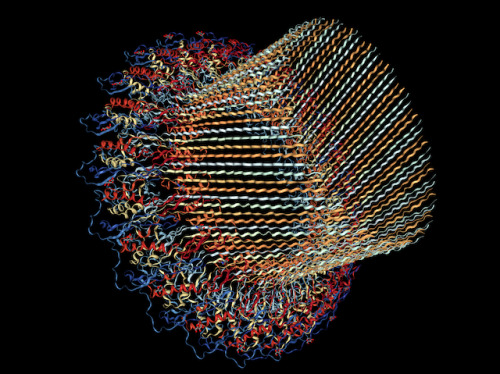
Immune Avengers Assemble
There are membranes wrapped around all of our cells, and single-celled organisms like bacteria, too. But they do more than just hold everything in – tiny tunnel-like pores control the flow of important chemicals in and out. Usually this delicate balance helps life along. But here is a pore-making protein that can kill. The complement membrane attack complex (MAC) assembles from a group of proteins in our blood, triggered by our immune system to punch holes in nasty pathogens like bacteria – its long strands piercing the cell surface while precious chemicals burst out. Examining the structure of MAC using cryogenic electron microscopy allows scientists to spot a crucial step in how these avenging proteins come together – slotting together a series of identical protein pieces into a ring shape, before it can begin to penetrate the cell. This insight may help the design of drugs to help MAC tackle infections.
Written by John Ankers
- Image generated from the RCSB Protein Data Bank (PDB), NGL Viewer – AS Rose et al. (2018) doi:10.1093/bioinformatics/bty419
- Text summary about research from ARC Centre of Excellence in Advanced Molecular Imaging, Department of Biochemistry and Molecular Biology, Monash University, Victoria, Australia
- Data files contained in the PDB archive are free of all copyright restrictions, with attribution
- Research published in Nature Communications, August 2018
You can also follow BPoD on Instagram, Twitter and Facebook
Archive link




Комментариев нет:
Отправить комментарий